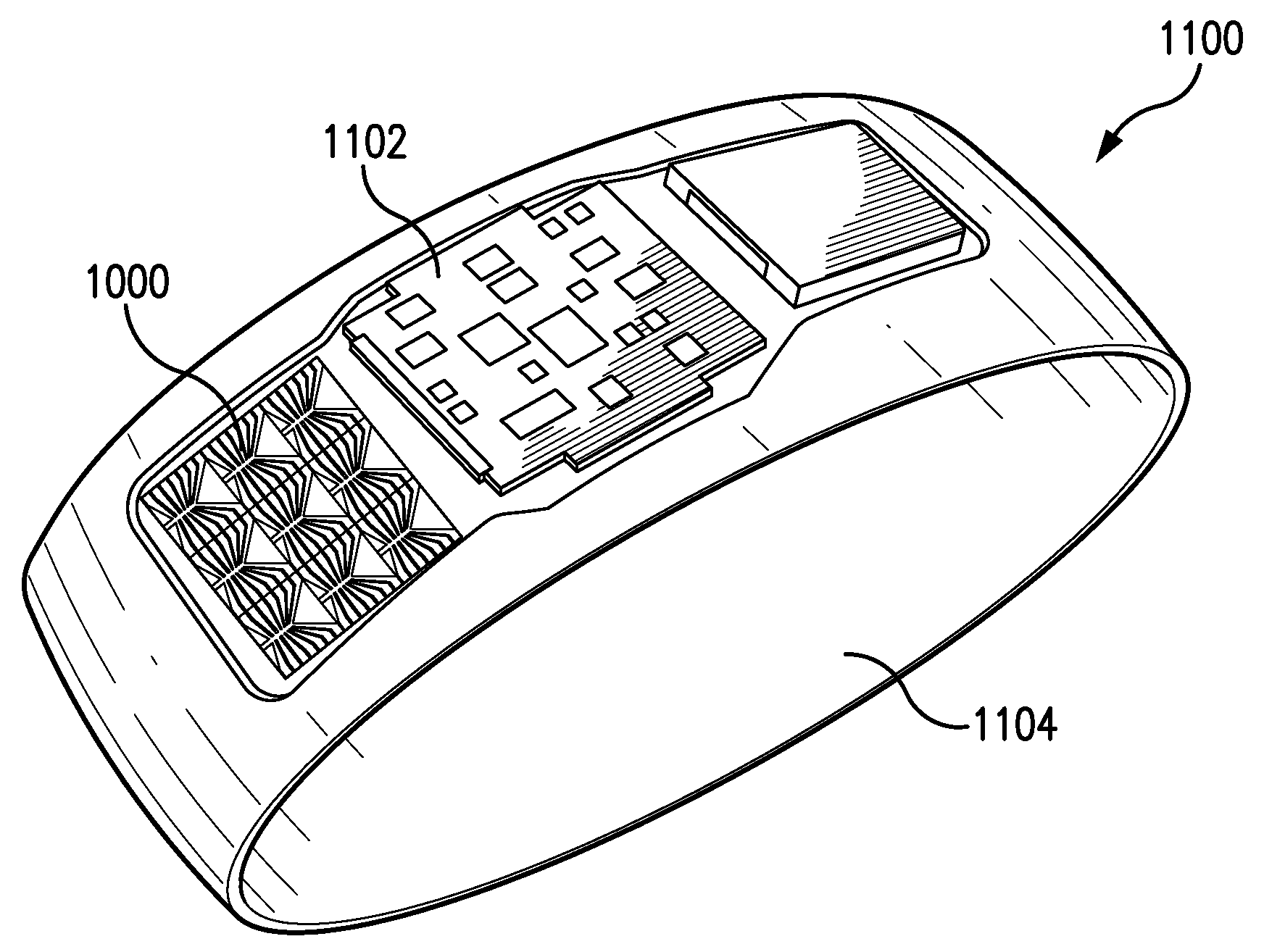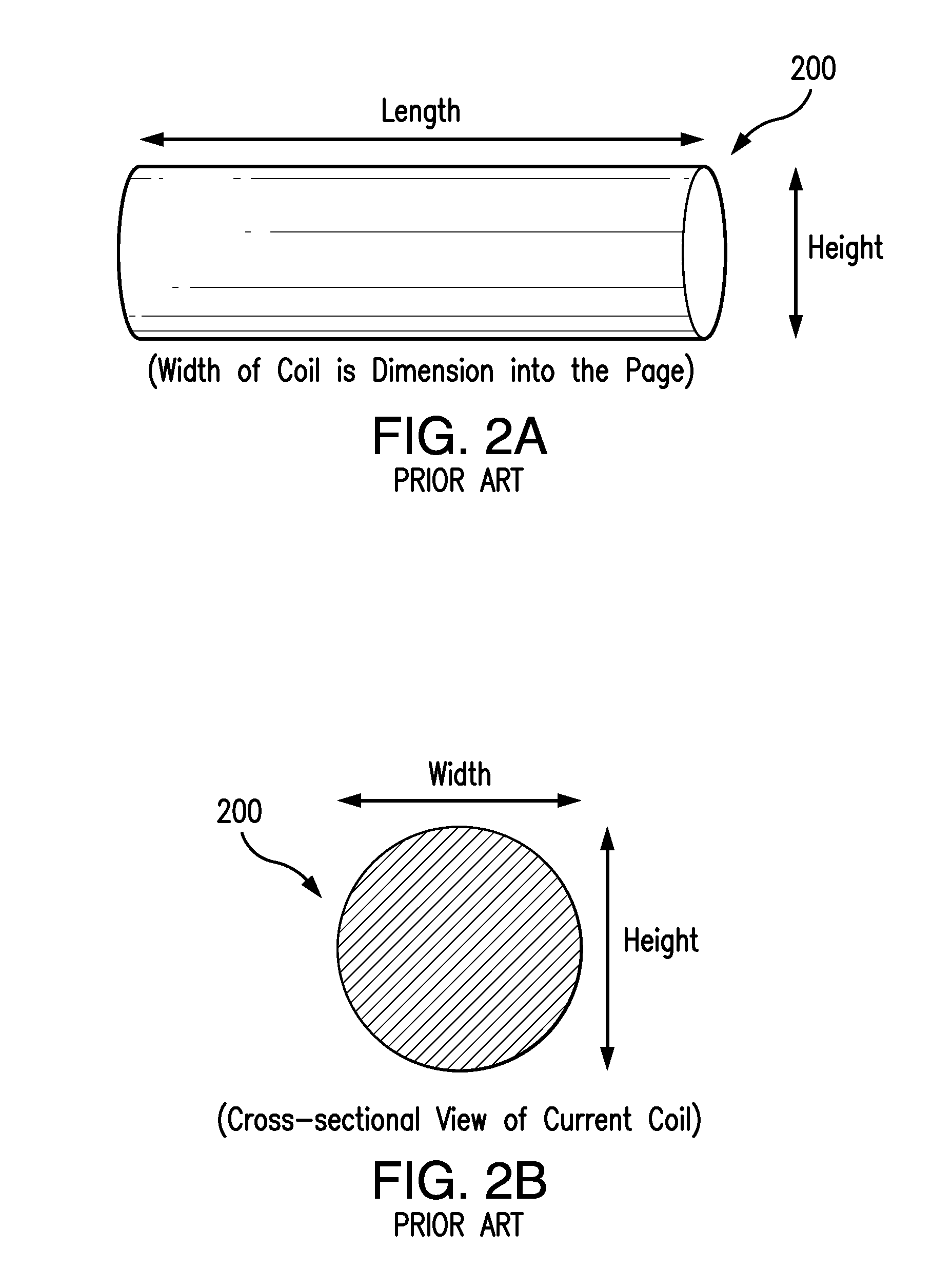Mini flat antenna system
a flat antenna and antenna body technology, applied in the direction of antennas, antenna details, electrical equipment, etc., can solve the problems of unfavorable orientation, unfavorable simple shrinking of the height (i.e., the diameter) of the coil, and the receiver will protrude rather far off the body, so as to achieve less energy, less energy, and more efficient energy transfer
- Summary
- Abstract
- Description
- Claims
- Application Information
AI Technical Summary
Benefits of technology
Problems solved by technology
Method used
Image
Examples
Embodiment Construction
[0037]FIG. 1 is a schematic view of a sensor system 100, which includes an implantable sensor 102 and a sensor transceiver 114, known in the art. The implantable sensor 102 includes an antenna 140, a light source 106, indicator molecules 107, photodetectors 108, and a reference photodetector 110. The implantable sensor 102 receives power and data 118 from the transceiver 114 through the antenna 140, which may be, for example, a coil. The sensor antenna 140 may receive power from the transceiver antenna 112, e.g., through inductive coupling, as represented by the “power and data” arrow 118 and the data arrow 120. The power received by the sensor antenna 140 drives the light source 106, which may be, for example, a light emitting diode (LED) or, possibly, an ulta-violet light emitting diode. The light source 106 emits radiation, including radiation over a wavelength that interacts with the indicator molecules 107. The indicator molecules 107 may be fluorescent indicator molecules or a...
PUM
 Login to View More
Login to View More Abstract
Description
Claims
Application Information
 Login to View More
Login to View More - R&D
- Intellectual Property
- Life Sciences
- Materials
- Tech Scout
- Unparalleled Data Quality
- Higher Quality Content
- 60% Fewer Hallucinations
Browse by: Latest US Patents, China's latest patents, Technical Efficacy Thesaurus, Application Domain, Technology Topic, Popular Technical Reports.
© 2025 PatSnap. All rights reserved.Legal|Privacy policy|Modern Slavery Act Transparency Statement|Sitemap|About US| Contact US: help@patsnap.com



